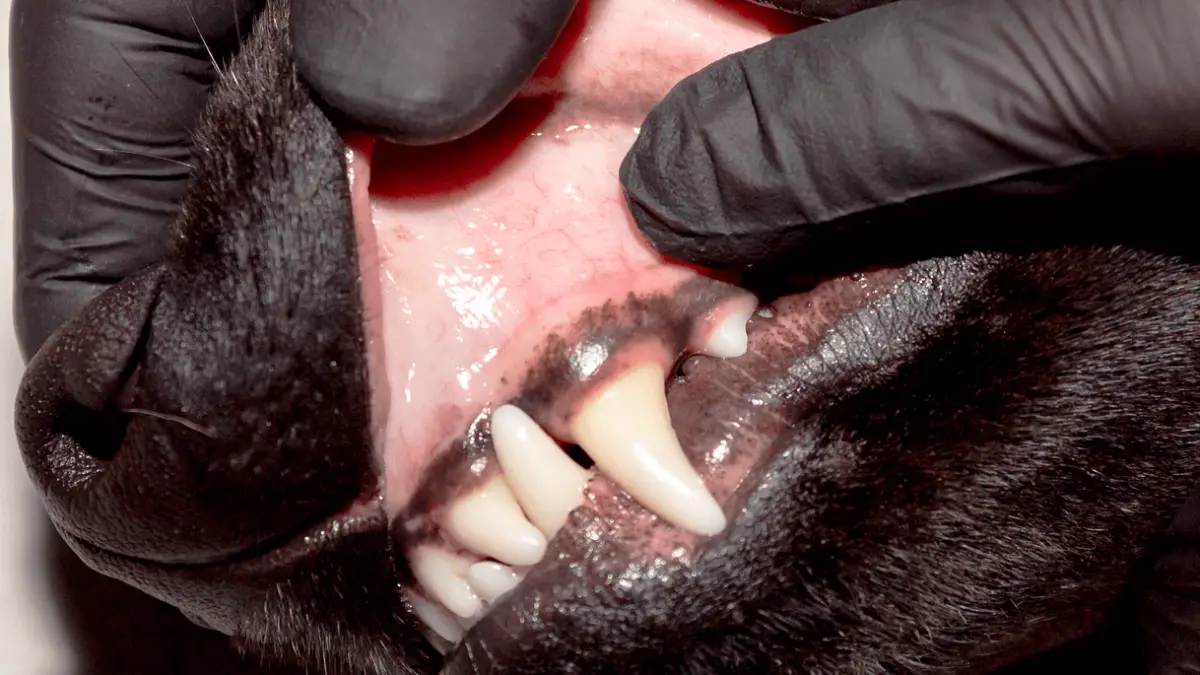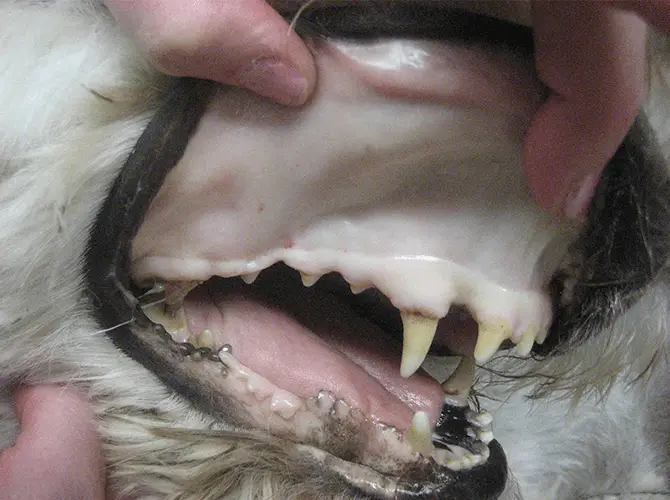Pale Gums in Dogs - Causes & Treatment
12.11.2021.
There are a few things dog owners have up their sleeves, and one of them is checking their dog’s gums. Most experienced owners will tell you that if you’re worried about your dog’s health, check the color of their gums. Of course, gums discoloration is not present in all diseases that could potentially affect your dog. However, things like pale gums can be an indication of a health issue. If you notice pale gums in your dog, here are a few things you should know and what you should be worried about.
What should healthy dog gums look like?
Before we go into details about possible causes of pale gums, you should have a reference point. Make sure you take a good look at your dog’s healthy gums and remember what they’re supposed to look like. That way, you will have a reference point for any future comparisons or doubts you have about your dog’s health. Healthy gums should be powdery pink. Some dogs can have naturally occurring discoloration, but if the gums aren’t powdery pink, it’s time to call your vet and make sure your dog doesn’t have underlying health issues.
VET TIP: If you’re a new dog owner, you might not be aware that you should be checking your dog’s gums regularly. One way to check the health of your dog’s gums is by pressing gently on the gums. The area where you applied pressure should be white. In healthy dogs, the color should return in 1 - 2 seconds.
What are pale gums in dogs?
Pale or white gums in dogs are usually a sign of a health issue. However, you need to know what pale gums look like. If you don’t know what pale gums look like, you might miss it. Pale gums can be nearly white. They can actually range from pale pink to almost white. Since it is primarily a sign of dehydration, the gums might feel sticky and lose the shiny appearance healthy gums have.
Possible causes of pale gums in dogs
After you notice your dog has pale gums, the question “What is wrong with my dog?” still remains. The first thing you should do is call your vet. However, most of us still want to learn about possible causes of pale gums even before our vet examines our dog. In fact, we want to know more about it even after the examination. Here are some of the most common causes of pale gums in dogs;
1. Blood loss
One of the possible causes of pale gums in dogs is blood loss. Blood loss can be a result of an injury and internal bleeding. Open wounds are easy to notice, but internal bleeding is a lot more worrying. Even parasites like ticks, hookworms, or fleas can cause severe blood loss and cause pale gums.
2. Bloat
Bloat, or gastric dilatation-volvulus, is considered a severe medical emergency. If the dog doesn’t receive immediate veterinary assistance and urgent surgery, the most likely outcome is death. The dog’s stomach will twist and block gases from exiting it. It will bloat and cause severe pain to the affected dog. If that happens, the dog should be rushed to the pet ER and undergo surgery. The veterinary surgeon will untwist the dog’s stomach and “staple” it so the condition doesn’t reoccur.
3. Shock
Dogs that are in shock will have pale gums. This state usually happens after a severe trauma like getting hit by a car. The dog’s blood vessels will constrict, there is a chance of external and internal bleeding, and the dog’s circulation will plummet. This is a dangerous situation and needs to be treated immediately. Take your dog to a hospital as soon as possible. The dog will have lowered body temperature, rapid heartbeat, and rapid breathing.
4. Kidney failure
Kidney failure is a usually slow, progressive disease that affects the dog’s ability to produce red blood cells. Since red blood cells are necessary for transporting oxygen to every part of the body, we don’t need to explain how important they are. Since kidney failure will affect the production of red blood cells, the direct symptom will be pale gums. If you notice pale gums, call your vet and ask for advice.
5. Anemia
One of the most common reasons dogs get pale gums is anemia. Anemia is not a disease; it is a symptom of other diseases in dogs. However, one of the main symptoms of anemia is pale gums. The dog’s blood will not have sufficient red blood cells, which means gums aren’t getting enough oxygen. Anemia will also cause other symptoms like loss of appetite, low energy, and tiredness.
6. Heart disease
Pale gums in dogs can indicate heart disease. If the heart is not pumping the blood properly, gums might not receive enough oxygen, which will cause them to become pale. However, if the dog has heart disease, other symptoms will become more apparent, like a weak pulse, rapid breathing, and coughing.
7. Cancer
Cancers are scary and potentially life-threatening. One of the potential causes of pale gums in dogs is cancer. More precisely, bone marrow cancer can affect the color of the dog’s gums. If you notice changes in your dog, make sure to call your vet and schedule a checkup.
8. Poison
There are different poisons around the house your dog could potentially ingest. We don’t need to explain how dangerous that is and that you should react immediately. It is a good idea to keep activated charcoal at home since it can absorb up to 80% of toxins. Pale gums can be caused by dogs that get heavy metal poisoning, like lead or zinc. Another possible reason for pale gums is rat poison. If you can’t reach your vet immediately, call the Pet Poison Helpline at 800-213-6680.
World Dog Finder team








Share